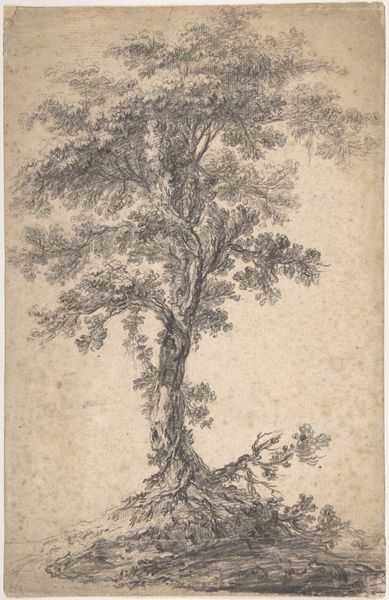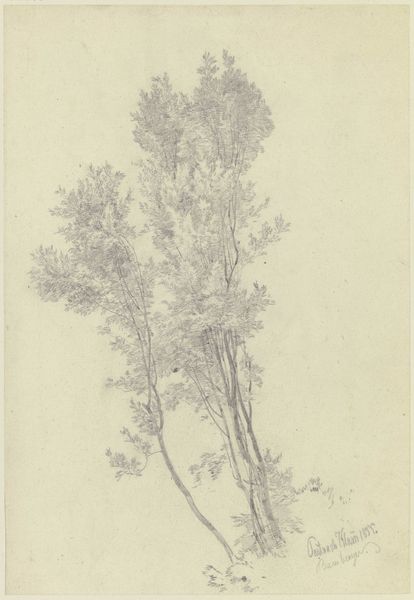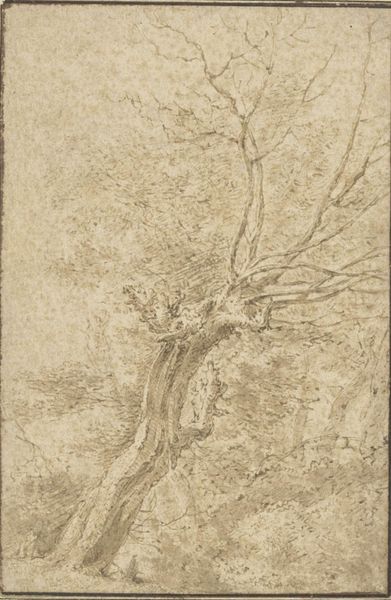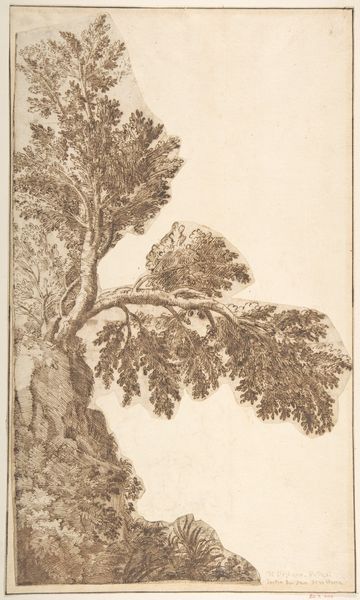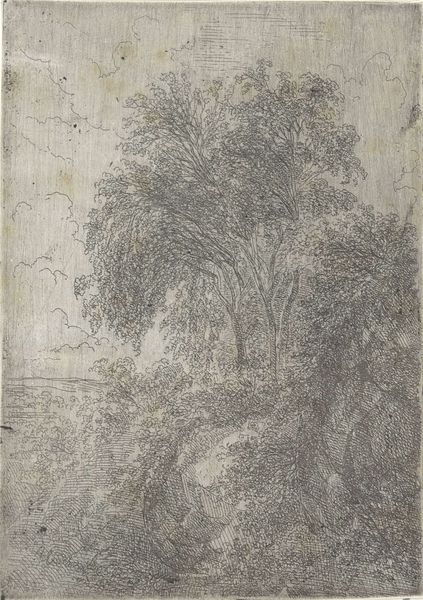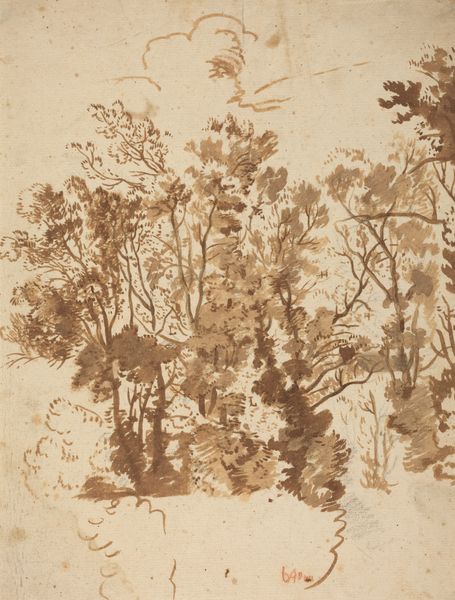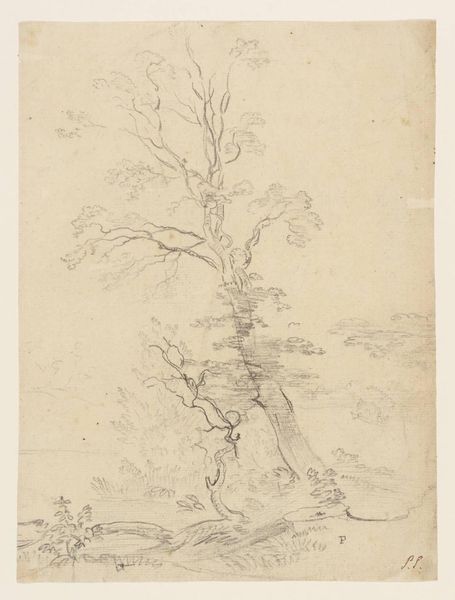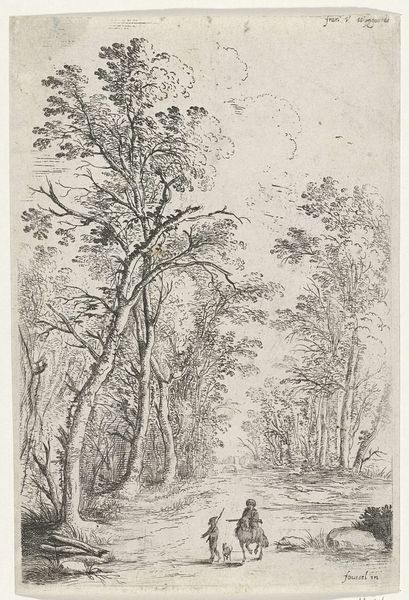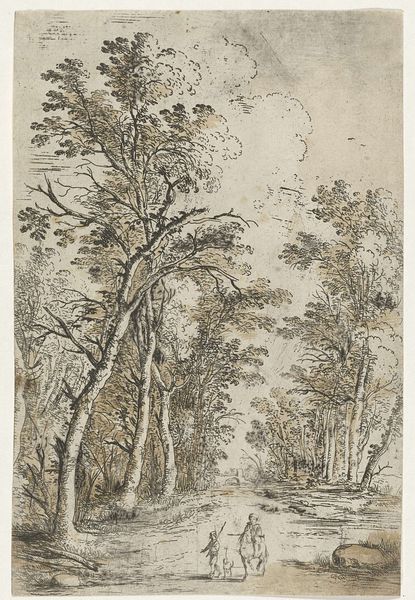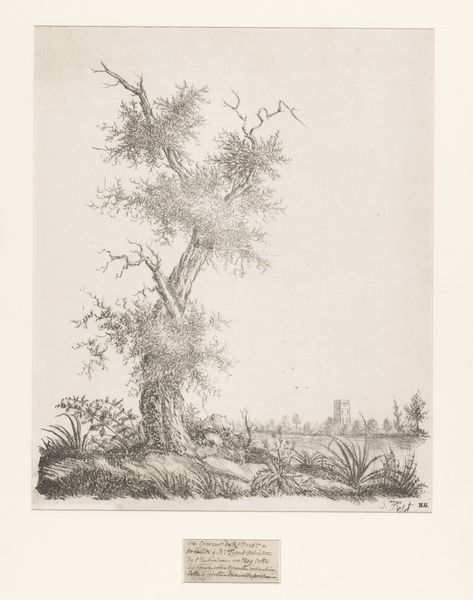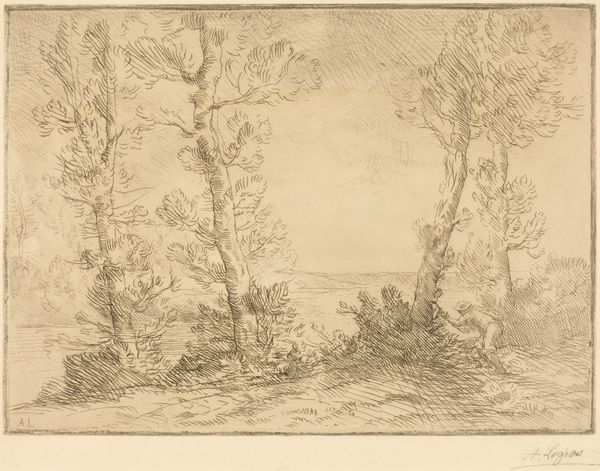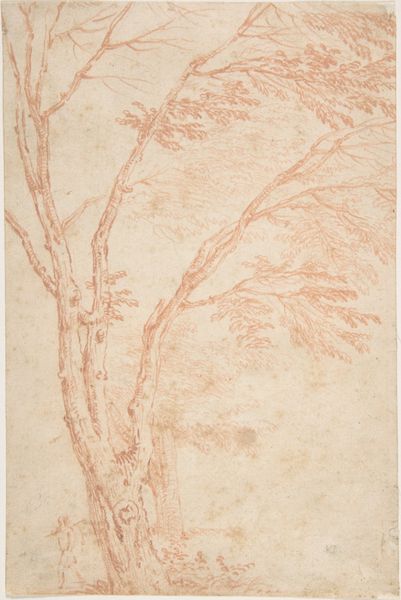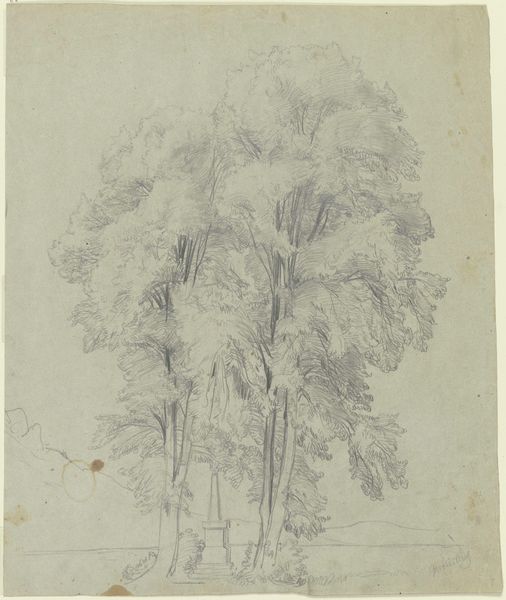
Bos van de Villa Madama buiten Rome, met een schietende jager c. 1610
0:00
0:00
gerardteriborch
Rijksmuseum
drawing, pencil
#
drawing
#
baroque
#
landscape
#
etching
#
pencil
#
realism
Dimensions: height 270 mm, width 185 mm
Copyright: Rijks Museum: Open Domain
Editor: Here we have "Bos van de Villa Madama buiten Rome, met een schietende jager," circa 1610, a drawing by Gerard ter Borch the Elder. It's a pencil drawing, evoking a very light, almost hazy atmosphere, although the marks are distinct, with a really active hunting scene at the forefront. How do you see this drawing operating within its period? Curator: The materiality here speaks volumes. It’s not just a landscape study; it's a document of land use and access. Consider the materials: graphite pencil. It's a relatively accessible medium, reflecting the growing market for art beyond aristocratic circles. The depicted activity – hunting – hints at land ownership, the social hierarchy, and access to resources. Who hunts, and who is excluded from this leisure or sustenance activity? The availability of such a landscape becomes an asset, a symbol of class. Editor: That's a very compelling way to view the landscape, by analyzing what it communicates about consumption and societal structures! Would you consider the choice of such common materials to possibly comment on high art values? Curator: Absolutely! Ter Borch's choice of graphite pushes against the tradition of more 'precious' materials used in earlier landscape art, such as the highly collectible watercolors, signifying a democratization, or perhaps a commercialization, of artistic production. Are we meant to see it only as artistic production? Or is it also tied into land exploitation for resources? How does the act of drawing – a relatively rapid and reproducible process – mirror or critique the processes of resource extraction happening in that landscape? Editor: So, we're not just looking at trees, but also the social and economic implications tied to that representation. Curator: Precisely! This drawing, seemingly simple in its medium and subject, is, in fact, enmeshed in networks of material availability, artistic labor, and socioeconomic structures. We also need to consider who bought and sold it as an art object to analyze it thoroughly. Editor: I didn’t even consider the accessibility of graphite, but this perspective on the process, materials, and social context has transformed my reading of the artwork! Curator: Looking at it through these avenues reveals much of the culture of the period and gives great context.
Comments
No comments
Be the first to comment and join the conversation on the ultimate creative platform.
